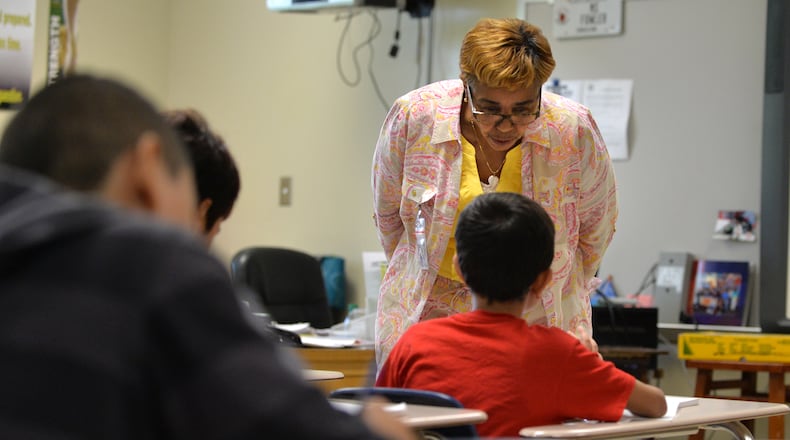When DeKalb County School District needs a substitute teacher, the classroom only gets one two-thirds of the time.
That could mean teachers from other classes check in on other classes where no teacher has reported for duty, or that classes go without adult supervision.
District officials attribute the shortfall to the number of substitutes available. Other metro Atlanta school districts have much more success filling classrooms when a teacher is out, at an average rate of more than 85 percent.
DeKalb school officials recently announced a substitute teacher job fair, to be held Wednesday at Elizabeth Andrews High School, inside district headquarters at 1701 Mountain Industrial Blvd. in Stone Mountain.
The district began publicly reporting data tracking teacher absences and how it fills classrooms just over a year ago when former board member James “Jim” McMahan questioned November 2017 figures showing more than 9,700 absences but 6,200 of those vacancies were filled.
“The only reason I asked is because it was an issue in our community,” said McMahan, who had fielded complaints from parents and even his own children about going without a teacher. “It was more of a reaction than proactive. When I saw it, my thought was that something isn’t working.”
For the 2017-2018 school year, the district filled 60,000 of its 90,000 teacher absences, meaning a substitute was available for 67 percent of empty classes. For the current school year, through Jan. 1, 2019, district officials have filled 71 percent of nearly 44,000 absences.
According to the district’s monthly human resources report for December 2018, there were 8,185 teacher absences for various reasons. Of those, 8,034 required substitute teachers. Most of the substitutes needed were because of illness — either the teacher or a sick parent, child or spouse — and staff development. About 8 percent, or 611, were to fill classrooms where no teacher has been hired. As of the monthly DeKalb County Board of Education meeting Jan. 7, the district still had 88.5 teacher vacancies.
The numbers differ from a teacher-absence database that recorded 8,431 total absences, with substitutes needed on 8,303 occasions.
Chief Human Capital Management Officer Bernice Gregory fielded questions during the January school board meeting from board member Joyce Morley, who wanted to know more about what the numbers meant.
“My question is on the numbers,” Morley said. “Is there actually 8,034 subs needed, or 500 subs and that same person was out for a whole year?”
“That could be the same teachers,” Gregory responded. “It could be 3,000 teachers with three absences across the district.”
“That needs to be explained,” Morley said.
McMahan said he sought solutions to the problem, including a decentralized model where schools take on the substitute issue themselves.
“The challenge is it was just me asking for a solution,” he said. “The board never came together and made it a mandate. We never held the administration accountable.”
About the Author
Keep Reading
The Latest
Featured


